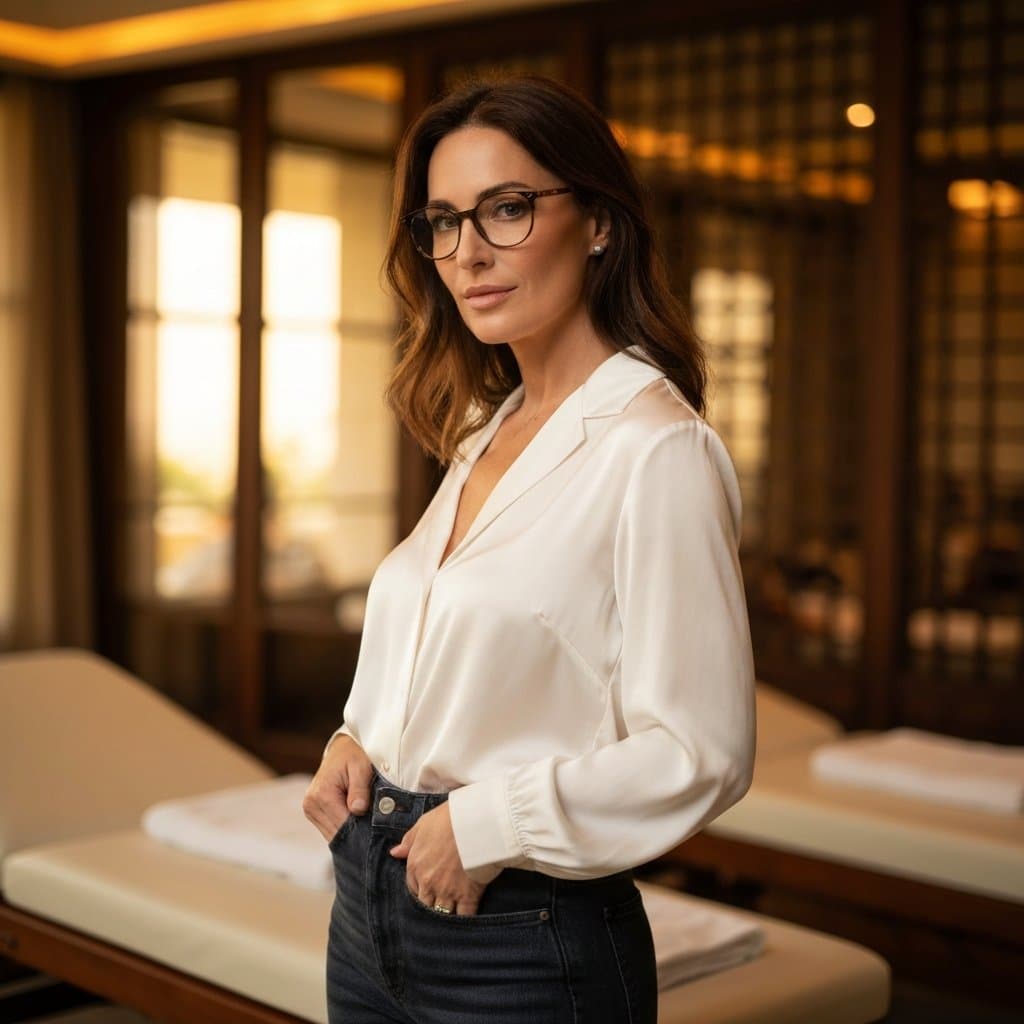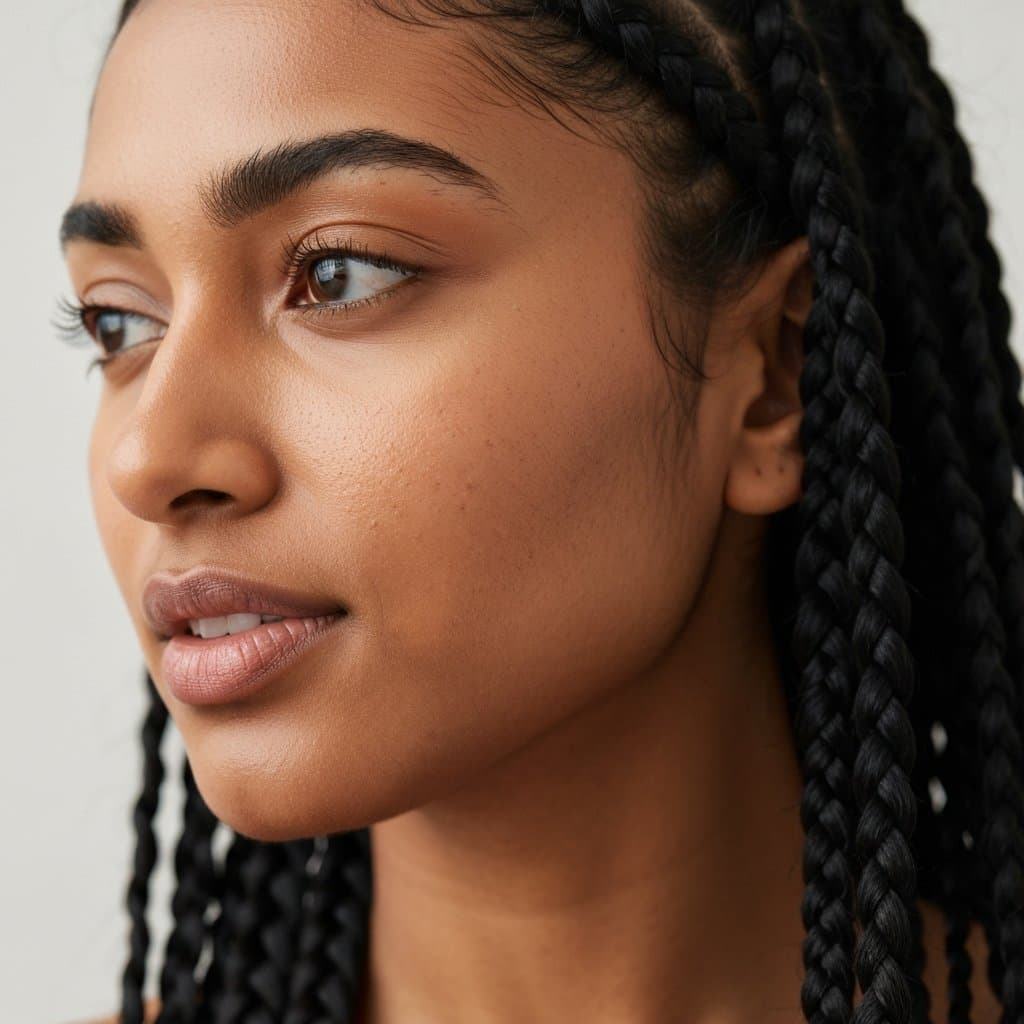Hair Color Guide: Finding the Perfect Shade for Your Skin Tone | Expert Tips
Your Ultimate Guide to Hair Color and Skin Tone
Choosing a new hair color is one of the most transformative beauty decisions you can make. It can redefine your style, boost your confidence, and completely refresh your look. However, the secret to a truly stunning, natural-looking hair color isn't just about picking a trendy shade from a magazine—it's about finding the perfect shade for your skin tone. The right color will illuminate your complexion, make your eyes sparkle, and create a harmonious, radiant appearance. The wrong one can leave you looking tired, washed out, or unnatural.
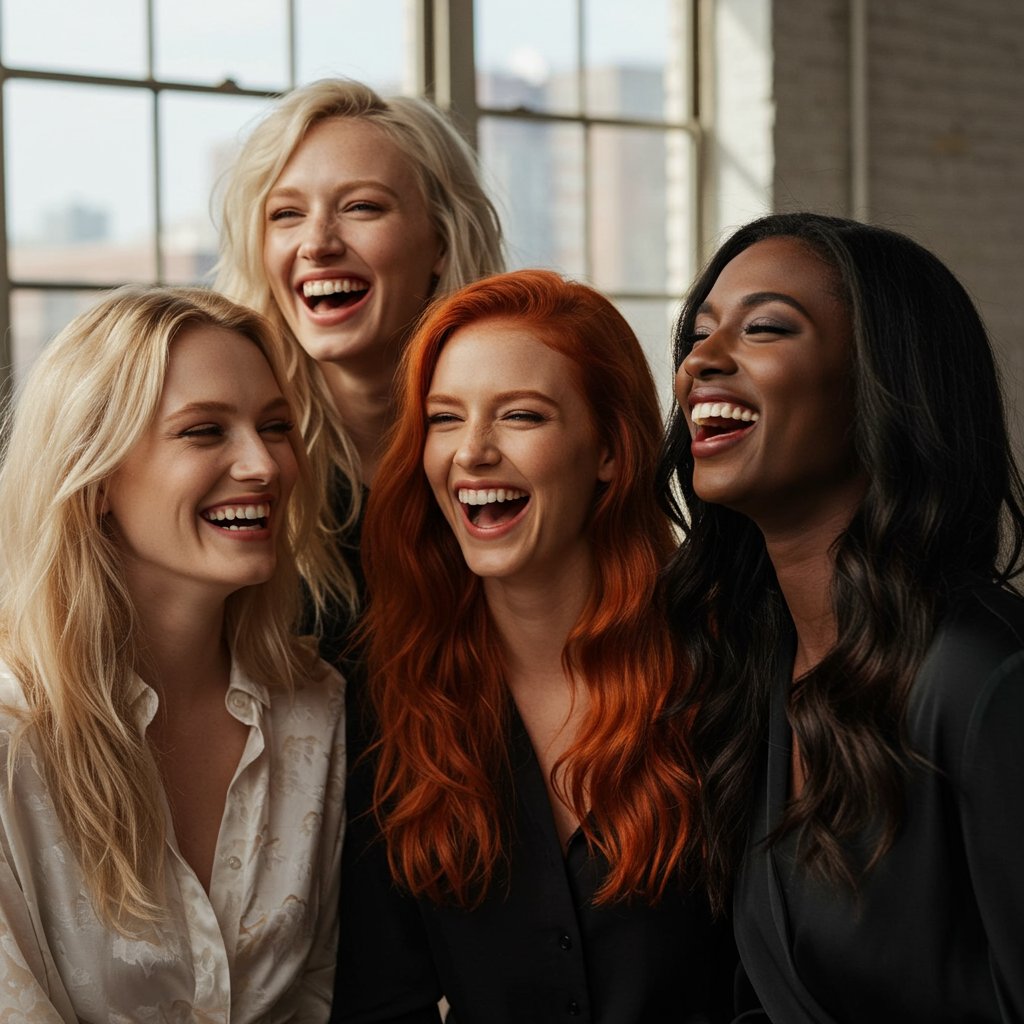
This comprehensive guide is designed to demystify the process of selecting the ideal hair color by focusing on the most crucial factor: your skin's unique undertone. We'll walk you through identifying your skin tone, understanding the difference between warm, cool, and neutral palettes, and exploring the shades that will make you look and feel your absolute best. Say goodbye to hair color regrets and hello to a shade that looks like it was made just for you. Get ready to unlock the science and art behind finding your perfect match.
---
The Harmony of Hue: Why Skin Tone is Crucial for Hair Color
The principles of color theory that artists use to create masterpieces apply directly to hair color. Just as a painter selects colors that complement each other on a canvas, a colorist chooses hues that will harmonize with your skin. Your skin tone is the canvas, and the hair color is the frame. When the frame complements the canvas, the entire picture comes to life. A well-chosen hair color can minimize the appearance of blemishes, soften fine lines, and give your skin a healthy, vibrant glow.
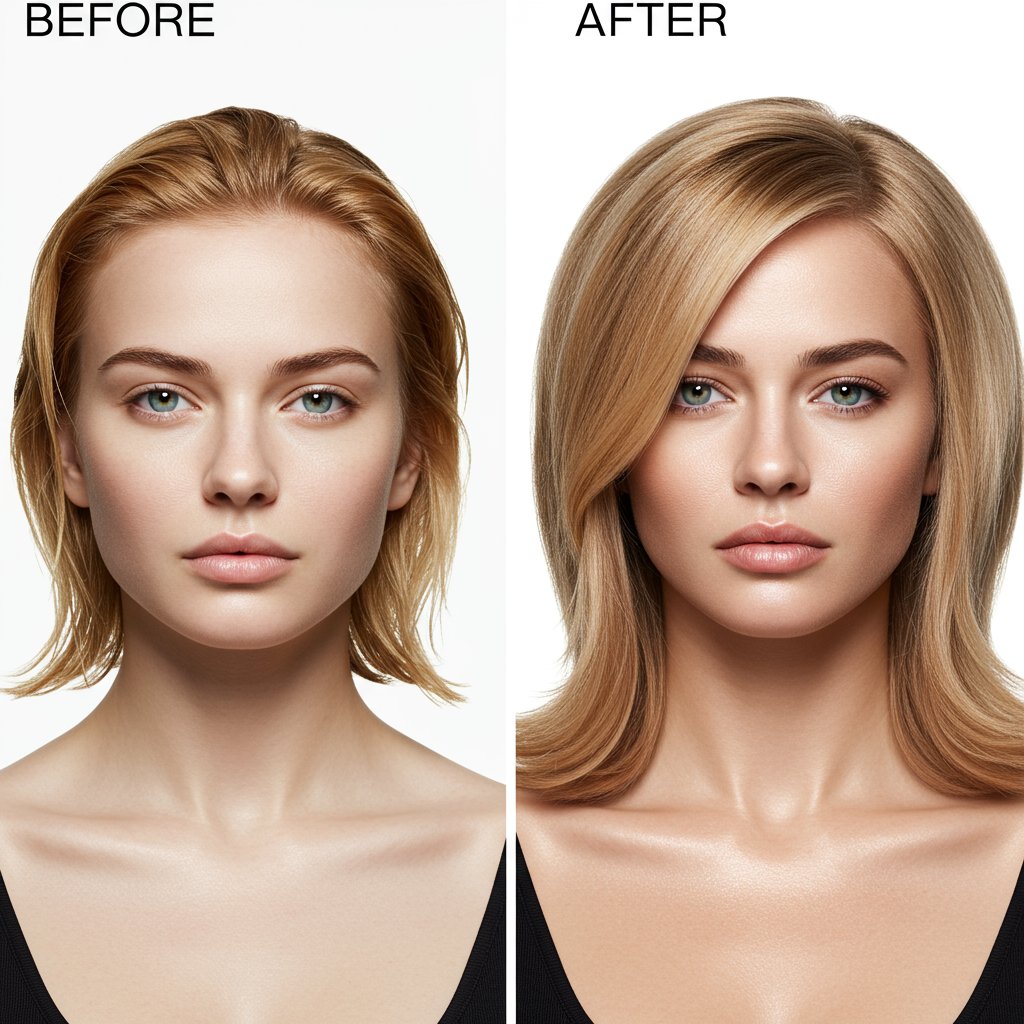
Conversely, a clashing color can have the opposite effect. A warm, golden blonde on a very cool, pink-toned skin can accentuate redness, while an ashy, cool brown on a warm, olive complexion can make the skin appear sallow and dull. This is why a friend's stunning auburn might look lackluster on you, or why that platinum blonde you admired doesn't have the same impact. It's not about the color itself, but the relationship between the color and your skin.
Understanding this relationship empowers you to make informed decisions alongside your stylist. It elevates the conversation from "I want to be blonde" to "I want to find the most flattering shade of blonde for my features." This subtle shift in perspective is the key to achieving a high-end, bespoke hair color that enhances your natural beauty rather than masking it. It's the difference between a good hair color and an unforgettable one.
---
Decoding Your Complexion: Surface Tone vs. Undertone
Before you can find your perfect hair color, you must first understand your skin. Many people confuse surface tone with undertone, but they are two distinct elements of your complexion. Mastering this distinction is the single most important step in this entire process.

Surface Tone: What You See First
Your surface tone is the color you'd describe your skin as: fair, light, medium, tan, or deep. This is influenced by sun exposure and can change throughout the year. You might be lighter in the winter and more tan in the summer. While your surface tone helps determine the level of your hair color (e.g., light vs. dark), it's your undertone that dictates the shade (e.g., golden vs. ashy).
Undertone: The Constant Color Beneath
Your undertone is the subtle, consistent hue beneath the surface of your skin. It never changes, regardless of sun exposure. Undertones fall into three primary categories: Cool, Warm, and Neutral. Identifying yours is the key to unlocking your ideal color palette. Here are a few simple tests you can do at home:
- The Vein Test: Look at the veins on the inside of your wrist in natural daylight. If they appear predominantly blue or purple, you likely have cool undertones. If they look greenish, you have warm undertones. If you can't tell or see a mix of both, you're probably neutral.
- The Jewelry Test: Think about which metal jewelry flatters you most. If you glow in silver, platinum, and rose gold, you're likely in the cool-toned family. If you shine in traditional yellow gold, you're probably warm-toned. If you can pull off both without a second thought, you're likely neutral.
- The White Fabric Test: Hold a piece of pure white fabric (like a t-shirt) up to your face in natural light. If your skin looks rosy or pinkish in comparison, you're cool. If your face takes on a more yellow or golden cast, you're warm. If an off-white or creamy fabric is more flattering than stark white, that also points to a warm tone. If you look good in both, you may be neutral.
---
The Ultimate Guide to Cool Skin Tones
Individuals with cool undertones typically have skin with a subtle pink, red, or blueish hue. They often burn easily in the sun and may have blue, grey, or deep brown eyes. The goal for cool-toned individuals is to select hair colors that complement this natural coolness, creating a crisp, striking, and elegant look.

Best Hair Colors for Cool Skin Tones
Think shades that have a blue, violet, or ashy base. These colors will counteract any excessive redness in the skin and create a beautiful, harmonious balance.
- Blondes: Go for icy shades like platinum, ash blonde, beige blonde, or champagne. These colors lack the yellow tones that can clash with cool skin, providing a sophisticated and modern edge.
- Brunettes: Rich, cool-toned browns are incredibly flattering. Think dark chocolate, espresso, ash brown, or a deep mocha. These shades provide stunning contrast without introducing unwanted warmth.
- Reds: While traditional warm reds can be tricky, cool-toned reds are a showstopper. Opt for deep burgundy, true violet-reds, or rich auburns with more purple than orange in their base.
- Blacks and Bolds: A true jet black or a blue-black can be exceptionally striking against cool-toned skin. For those feeling adventurous, jewel tones like deep sapphire blue, amethyst purple, or emerald green work beautifully.
Colors to Approach with Caution
Steer clear of overly warm colors like golden blonde, coppery red, and caramel browns. These shades can bring out too much redness in the skin and create a jarring, unnatural contrast that detracts from your features.
---
The Ultimate Guide to Warm Skin Tones
Warm undertones are characterized by a peachy, golden, or yellow hue. People with warm skin tones often tan easily and may have hazel, green, or warm brown eyes. The right hair color for this group will enhance the natural warmth of the skin, giving it a sun-kissed, healthy glow all year round.
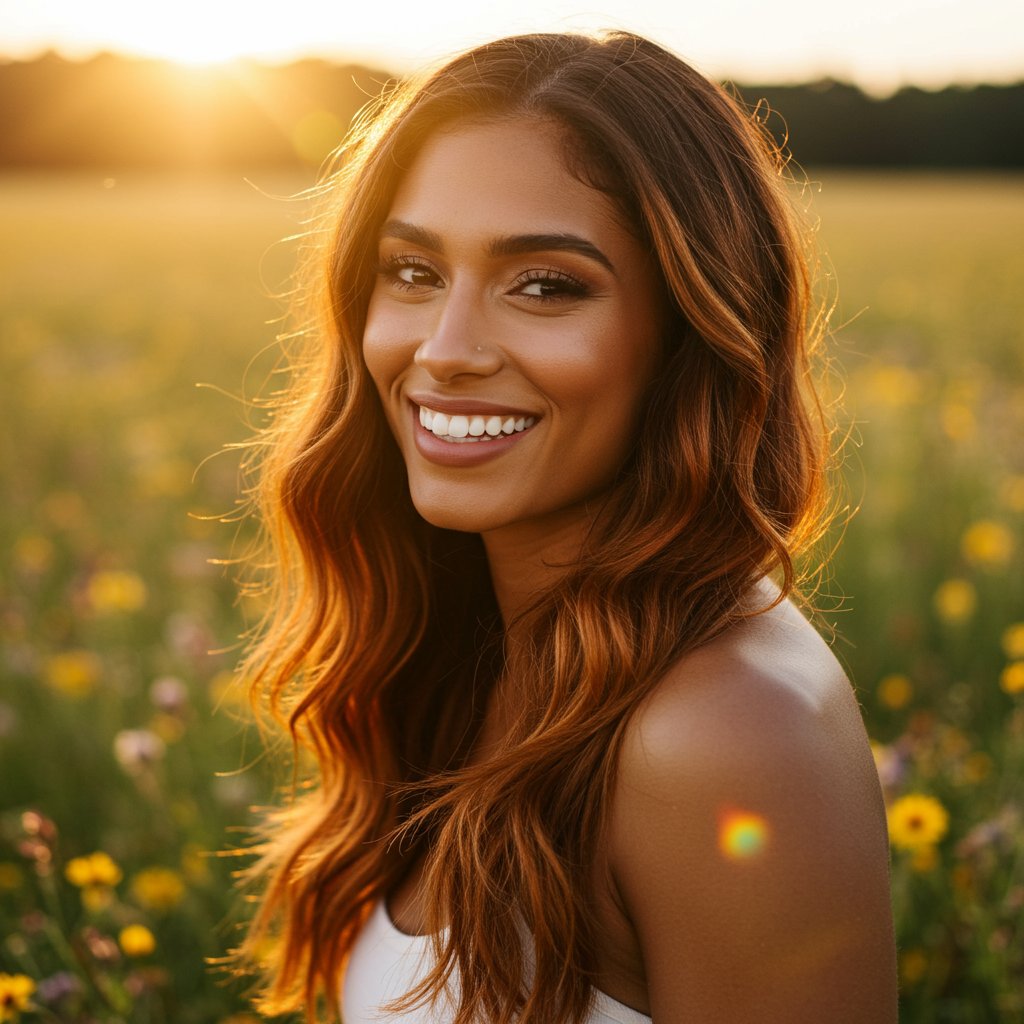
Best Hair Colors for Warm Skin Tones
Look for shades with a golden, copper, or red base. These colors will pick up on the warmth in your complexion and make you look vibrant and luminous.
- Blondes: Embrace the warmth with shades like golden blonde, honey, butterscotch, caramel, or strawberry blonde. These colors look natural and effortless, as if you've spent a summer at the beach.
- Brunettes: Rich, warm browns are a perfect match. Consider shades like golden brown, chestnut, mahogany, or milk chocolate. Balayage with caramel or honey highlights can add beautiful dimension.
- Reds: This is where warm-toned individuals truly shine. From bright copper and auburn to rich ginger and cinnamon, nearly every shade of red will look incredible. The warmth in the hair color will make your skin radiate.
- Blacks: Instead of a harsh blue-black, opt for a softer, warmer black with hints of brown, sometimes referred to as a "natural black" or "brown-black."
Colors to Approach with Caution
Be wary of colors with a strong blue or violet base, such as platinum blonde or ashy brown. These can drain the color from your face, making your warm skin appear sallow or tired.
---
The Ultimate Guide to Neutral Skin Tones
If you struggled to identify your undertone with the tests above, you may have a neutral skin tone. This means you have a balanced mix of cool and warm hues, or no obvious undertone at all. This is often considered the most versatile skin tone, as you have the freedom to experiment with a wider spectrum of hair colors.
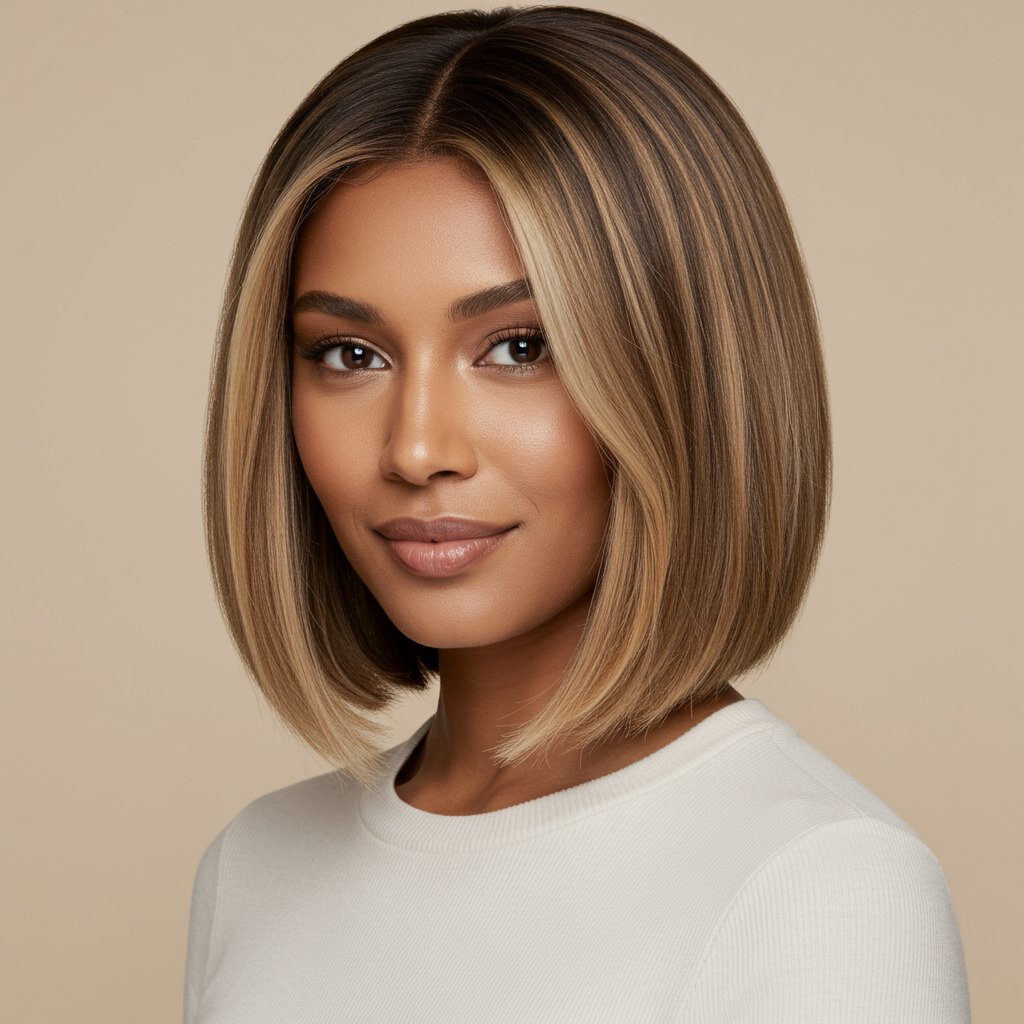
The Best of Both Worlds
People with neutral skin tones can pull off both warm and cool shades. You can rock an icy platinum blonde just as well as a golden honey blonde. This provides an incredible amount of flexibility when choosing a new look. The world of hair color is truly your oyster. Because you don't have to worry about counteracting strong undertones, your choice can be based more on personal preference, eye color, and desired maintenance level.
Choosing a Direction for Maximum Impact
While you can wear almost anything, the most flattering shades often lean slightly one way or the other to enhance a specific feature. For example, if you have blue eyes, leaning towards a slightly warmer shade like a caramel balayage can create a beautiful contrast and make them pop. If you want to emphasize a rosy glow, a cooler beige blonde can be stunning. "Bronde"—the perfect hybrid of brunette and blonde—is an exceptional choice for neutral skin tones, as it contains both warm and cool reflects. A neutral red, like a true red without too much orange or violet, is also a fantastic option.
---
Beyond Undertones: Considering Eye Color and Maintenance
While skin tone is the primary guide, other factors contribute to finding your absolute perfect shade. A truly customized color considers every aspect of your appearance and lifestyle for a result that is both beautiful and practical.
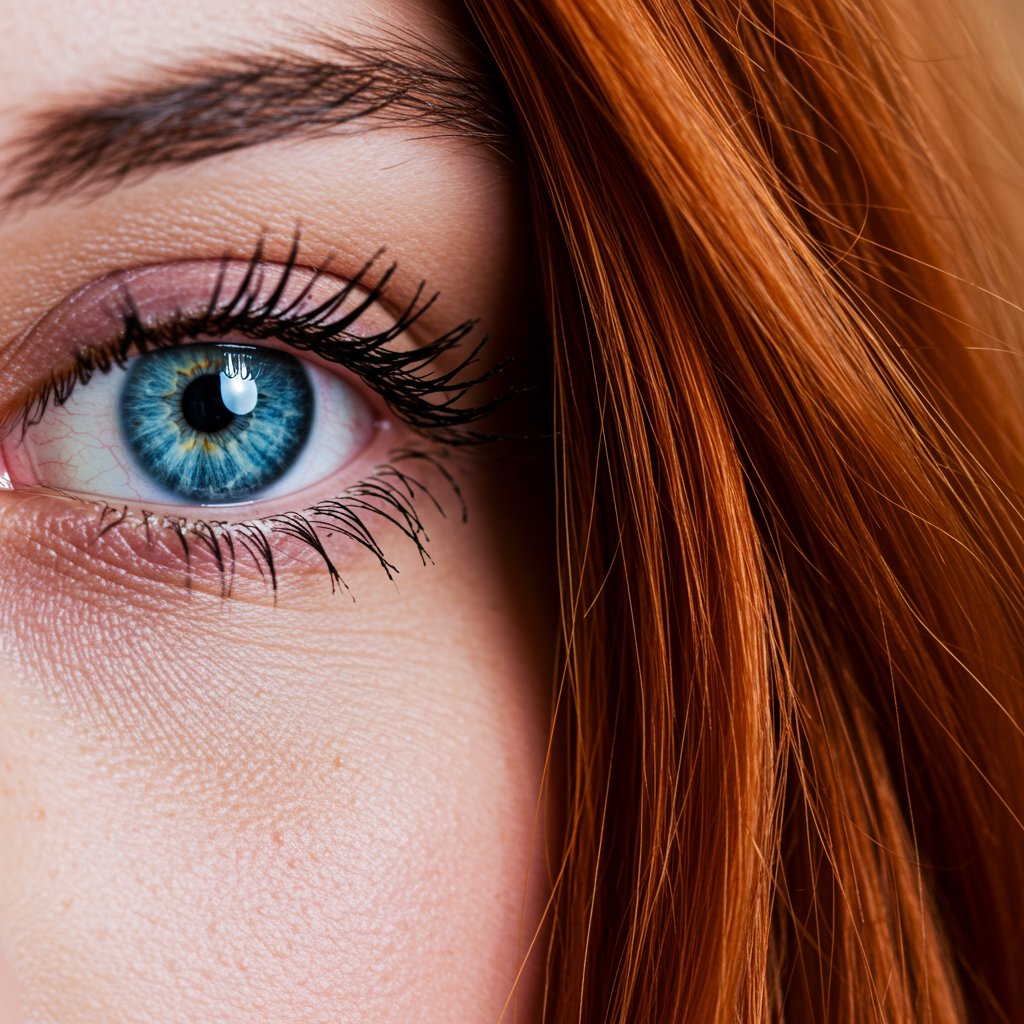
Let Your Eyes Guide You
Your eye color can be a fantastic secondary guide for fine-tuning your hair color. Creating contrast or harmony with your eyes can elevate your look from great to breathtaking.
- For Blue or Grey Eyes: Warm, coppery reds and rich golden blondes create a striking contrast that makes blue and grey eyes appear even more vibrant and piercing.
- For Green or Hazel Eyes: Rich, warm tones like chocolate brown, caramel, and butterscotch can bring out the golden flecks in hazel or green eyes. Deep, violet-based reds can also provide a stunning, high-impact contrast.
- For Brown or Amber Eyes: The options are nearly limitless. Cool ash tones can create a sophisticated contrast against deep brown eyes, while warm honey or caramel highlights can enhance their natural warmth and depth.
Factoring in Maintenance and Lifestyle
Your dream color should also fit your life. Be honest about the time and budget you're willing to commit to upkeep. A solid platinum blonde requires root touch-ups every 4-6 weeks, which is a significant commitment. In contrast, a dimensional balayage or subtle babylights can grow out gracefully over several months with minimal maintenance. Discuss your lifestyle with your stylist; they can recommend techniques and shades that will look fantastic without demanding more from you than you're willing to give.
---
The Professional Consultation: Why It's Non-Negotiable
While this guide provides a strong foundation, nothing can replace the trained eye and expert knowledge of a professional hair colorist. Box dyes from the drugstore offer a one-size-fits-all solution that can never account for your unique combination of skin tone, natural hair color, hair texture, and porosity. A professional consultation is a crucial step towards achieving the hair of your dreams safely and effectively.
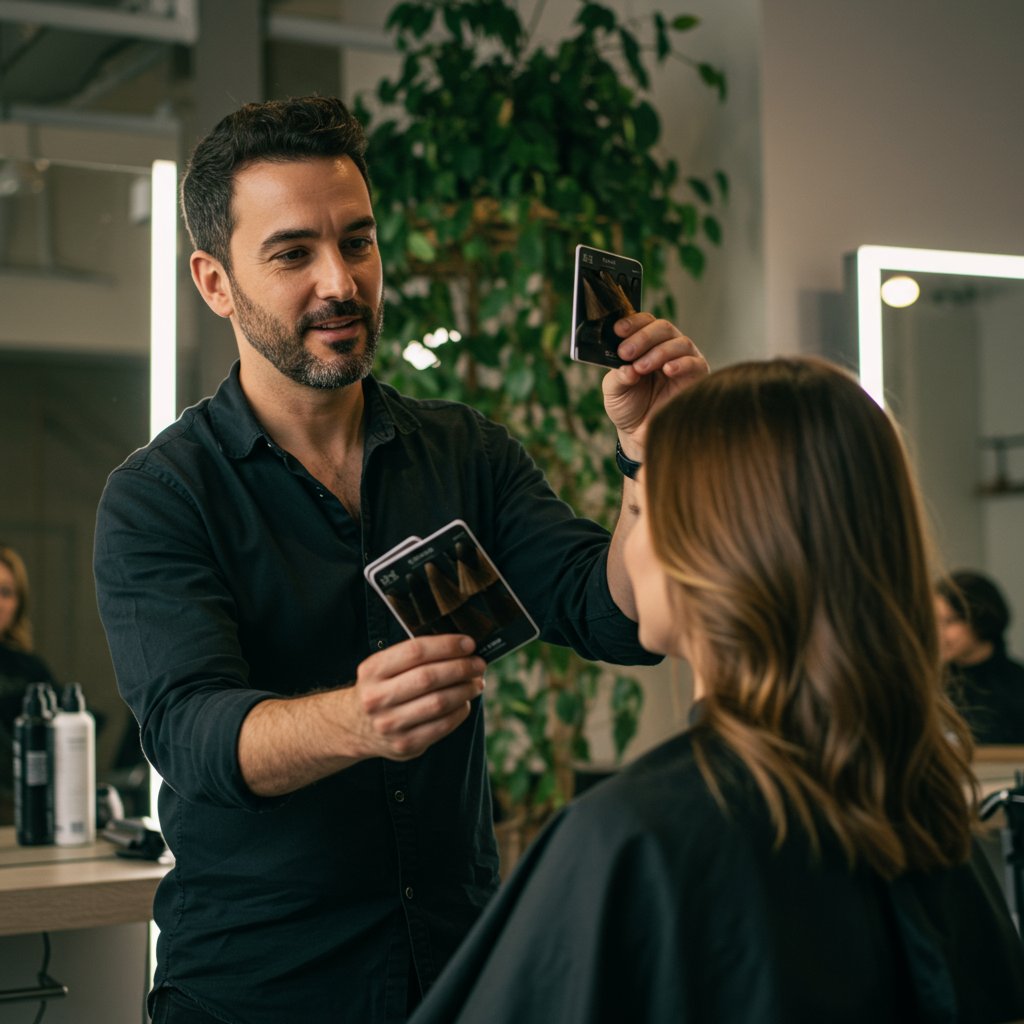
A Stylist's Eye for Detail
An experienced stylist can see nuances in your skin tone that you might miss. They can assess the health of your hair to ensure it can handle the desired chemical process. They understand how your existing hair color—even if it's your natural, virgin hair—will affect the final outcome of the new dye. This is called the underlying pigment, and managing it is a complex science that professionals spend years mastering.
The Art of Custom Formulation
Professional hair color is not poured from a single bottle. Your stylist is a chemist, mixing multiple shades and developers to create a custom formula tailored precisely to you. They can create a dimensional, multi-tonal color that has depth, shine, and reflects light beautifully—qualities that are impossible to achieve with a flat, single-process box dye. This custom formulation ensures your new color is not only flattering but also unique to you, preventing that dreaded generic, unnatural look.
---
Pro Tips for Maintaining Your Perfect Shade
Once you've invested in the perfect hair color, you'll want to keep it looking fresh and vibrant for as long as possible. Proper aftercare is essential.
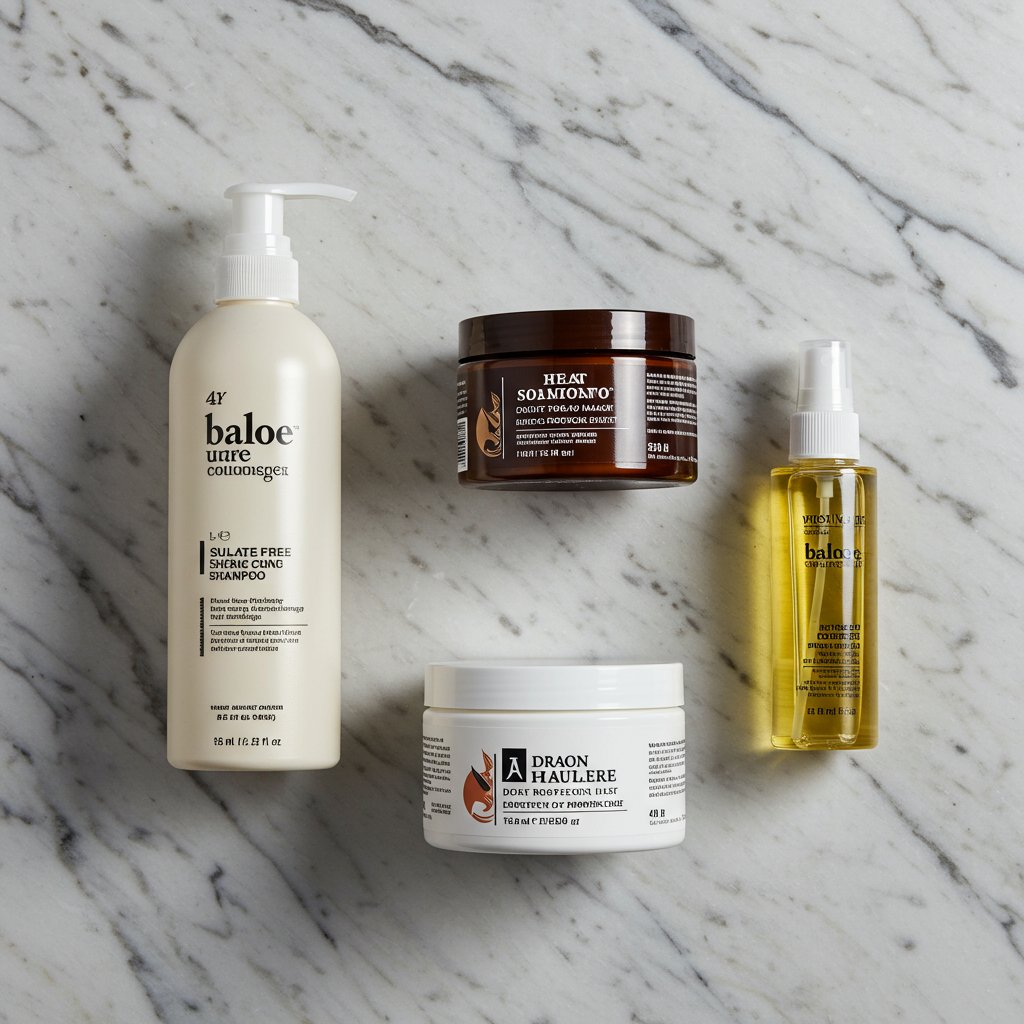
- Use Color-Safe, Sulfate-Free Products: Sulfates can strip color from the hair shaft. Invest in a high-quality shampoo and conditioner specifically designed for color-treated hair.
- Wash Less Frequently with Cool Water: Hot water opens the hair cuticle, allowing color molecules to escape. Wash your hair less often and use cool or lukewarm water to help seal the cuticle and preserve your color.
- Incorporate a Weekly Hair Mask: Color processing can be drying. A deep conditioning treatment or hair mask once a week will restore moisture, improve elasticity, and keep your hair healthy and shiny.
- Always Use a Heat Protectant: Heat from styling tools is a major cause of color fading. Before you blow-dry, curl, or straighten, always apply a heat protectant spray to shield your strands.
- Schedule Regular Gloss Treatments: A gloss or toner treatment at the salon between full color appointments can refresh your shade, boost shine, and neutralize any unwanted brassy tones. It's a quick way to bring your color back to life.
---
Frequently Asked Questions (FAQ)
Q1: How can I be absolutely sure about my undertone if the tests are confusing?
If you're finding the home tests ambiguous, the best course of action is to book a consultation at a professional hair salon. A stylist can drape different colored towels or foils around your face to see which ones make your features come alive. Their trained eye is often the most reliable tool for determining a tricky undertone.
Q2: Can I choose a warm hair color if I have a cool skin tone?
Yes, but it requires a strategic approach. An expert colorist can create a custom shade that incorporates a hint of warmth (like golden babylights in an ash brown base) without clashing with your cool skin. It's about finding the right balance and placement, which is best left to a professional.
Q3: Does my hair's natural color matter when choosing a new shade?
Absolutely. Your natural hair color reveals your hair's underlying pigment. For example, dark hair tends to lift to warm, reddish-orange tones. A stylist needs to account for this when formulating your color to either embrace that warmth or neutralize it to achieve a cooler result. It also impacts the level of lift required and the overall health of your hair.
Q4: How does age affect my hair color choices?
As we age, our skin tone can lose some of its pigment and become softer. Often, extremely dark or harsh colors can look severe. Many people find that softening their base color by a shade or two, or adding softer, dimensional highlights around the face, creates a more youthful and flattering look. It's less about specific colors and more about avoiding high-contrast, solid looks.
Q5: Is box dye a good way to test a color for my skin tone?
It is highly discouraged. Box dye is formulated with a standard, high-strength developer that can cause unnecessary damage. The color is flat and opaque, and the results are notoriously unpredictable. Worse, it can be incredibly difficult and expensive for a professional to correct a bad box dye job. For testing, consider trying on wigs or using a virtual hair color app before committing to a professional service.
---
Conclusion: Embrace Your Most Confident Color
Finding the perfect hair color for your skin tone is a journey of self-discovery. By understanding the fundamentals of your complexion—cool, warm, or neutral—you empower yourself to make choices that will enhance your natural beauty in a profound way. The right shade does more than just change your hair; it illuminates your entire being, making your skin look healthier, your eyes brighter, and your confidence soar.
Remember that these guidelines are a starting point, not a set of rigid rules. The most important factor is how your hair color makes you feel. Use this knowledge to collaborate with a trusted professional stylist who can bring your vision to life with a custom-formulated color that is uniquely, beautifully, and perfectly you. Step out of the salon not just with a new look, but with a renewed sense of self, ready to shine in your most flattering hues.
